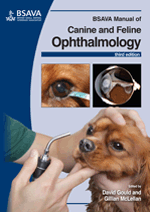
Full text loading...

Investigation of orbital disease is challenging and in many emergency situations rapid recognition of signs of orbital disease and instigation of appropriate management are critical to the final outcome for the patient. Familiarity with the anatomy and physiology of the region facilitates an understanding of the basic principles of orbital disease pathogenesis. This chapter considers anatomy and physiology; clinical signs; investigation of disease; canine and feline conditions; enucleation.
The orbit and globe, Page 1 of 1
< Previous page | Next page > /docserver/preview/fulltext/10.22233/9781910443170/9781910443170.8-1.gif

Full text loading...





















